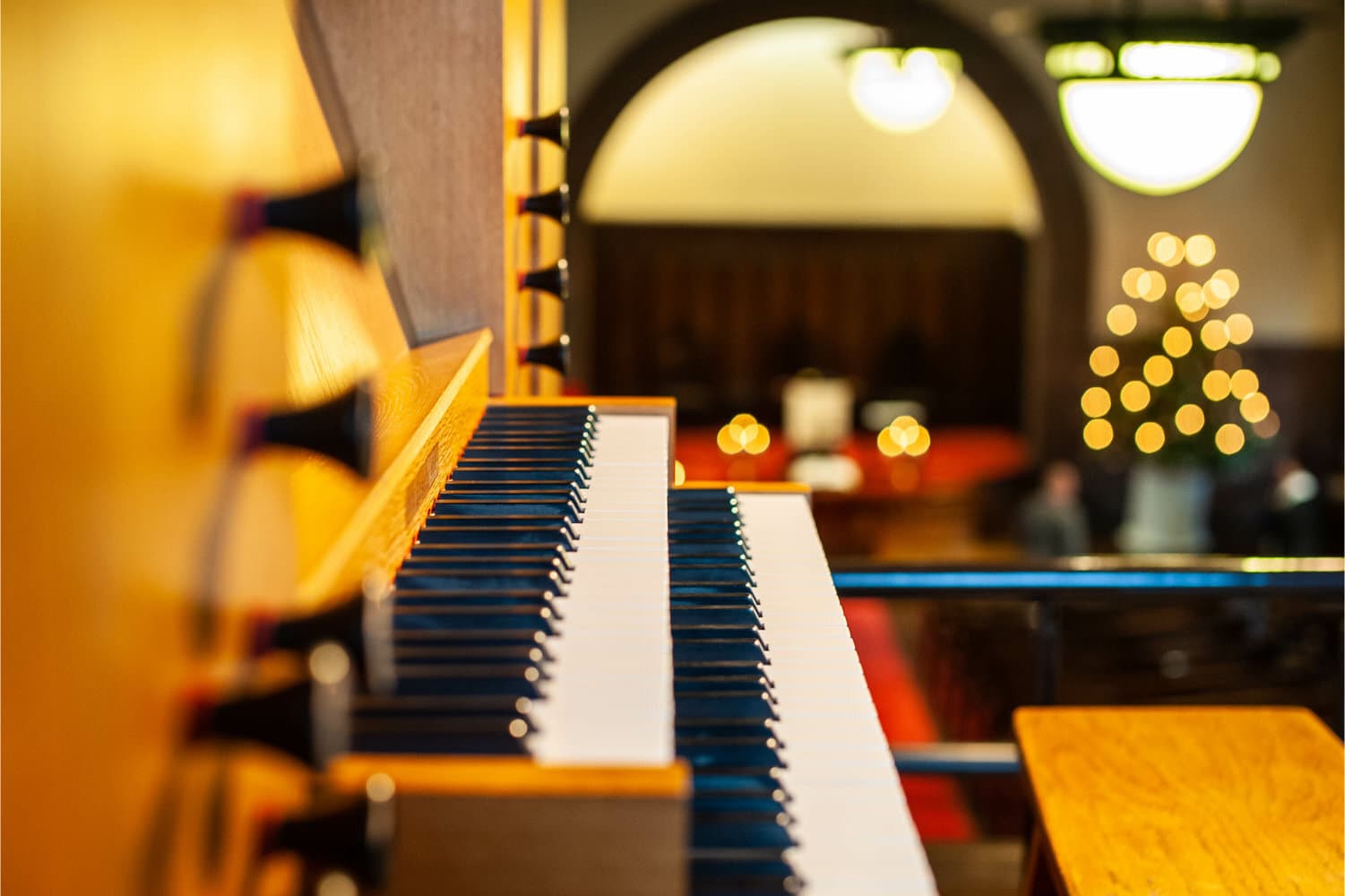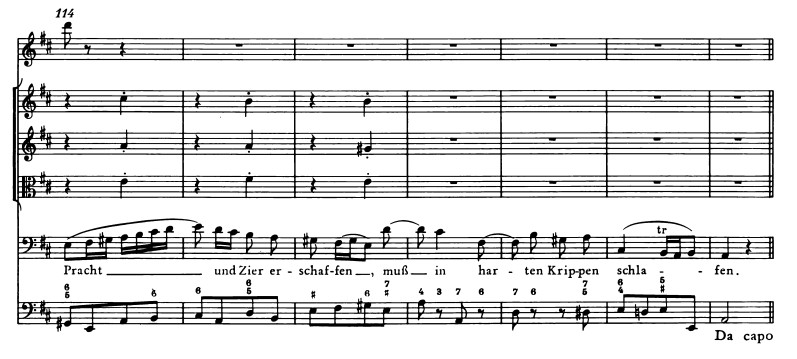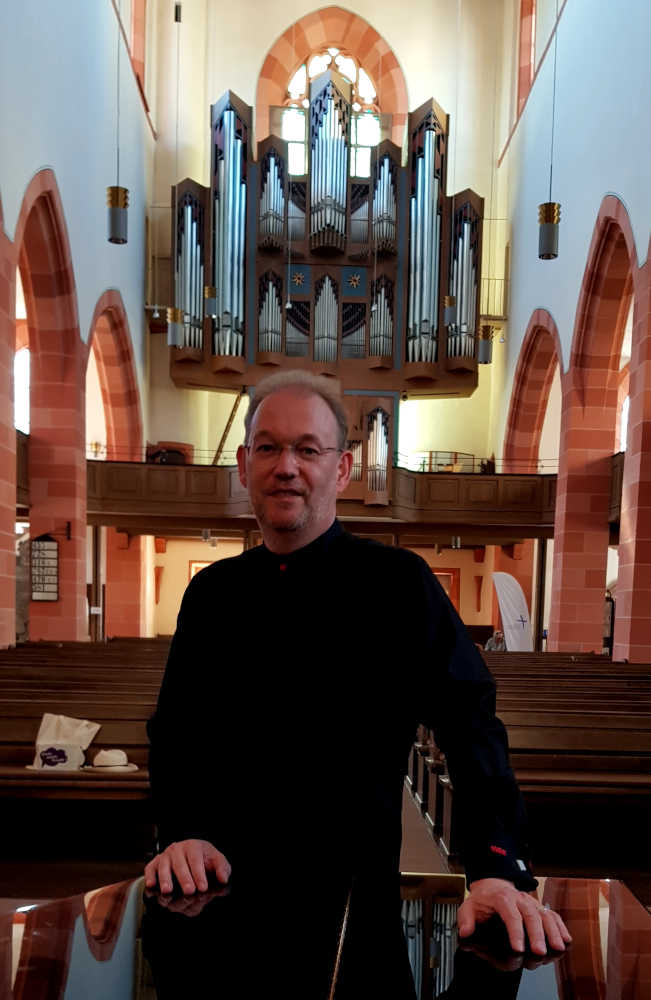by Cathrin Rahn and David Rauh (07.12.2022)
translation by Edd Lee (13.12.2022)
For many musicians, it is as much a part of the Advent and Christmas season as the Christmas tree or minced pies... Of course we are talking about the Christmas Oratorio by the Leipzig Thomaskantor Johann Sebastian Bach, which fills almost every church with festive sounds in wintertime. It is well known to us all in its original form with four soloists, mixed choir and orchestra with basso continuo, but the circumstances are not always suitable for such a grand performance. Good thing there's now a new option to perform this masterpiece without orchestra!

Today, the Christmas Oratorio by Johann Sebastian Bach is the undisputed classic among settings of the Christmas story. When it was composed around the turn of the year 1734/35, each of the six parts was performed individually during separate church services. Bach had written a cantata for every holiday around Christmas, for the three Christmas celebration days, New Year's Day, the Sunday after New Year's Day and the Feast of the Three Kings.
However, the Christmas Oratorio is rarely used in church services these days. Most of the time, the first three parts, or occasionally the final three parts, can be heard in church concerts. This is most likely due to the high number of personnel required. Hiring and paying for all the musicians for a performance of just part of the oratorio, as part of a church service, is time-consuming and expensive. Up until now, there have been no convincing arrangements of the oratorio, or individual parts, for smaller ensembles. Now however, arrangements of the first three parts have been published by Carus Verlag, in which the organ replaces the orchestra. Does that work – with such colourful work? In a conversation with the editor Carsten Klomp, we got to the bottom of this question, and learned more about his working methods, ideas and principles.
The Christmas Oratorio awoke a particular fascination for Carsten Klomp in his youth, when he first experienced the work in his choir. To this day, it continues to accompany him as a sought-after continuo player and conductor. Every year, he looks forward to the moment in rehearsal when the first bars sound: “It draws you in, and suddenly, everyone is completely there”. In 2020, however, a performance in its original form was not possible, so other solutions had to be considered. The idea put forward by a colleague of Klomp's seemed at first impossible: “Can you imagine playing it on the organ alone?” His first reaction: “It's unplayable, just the demisemiquavers at the beginning for starters!” But the organ professor couldn't let the idea go. Shortly after, he sat down at his organ and began to ponder the opening bars for hours. Gradually the puzzle came together to form a playable movement. A first success! After that, the rest couldn't be that difficult anymore... And indeed: Part I for organ was completed in time for Christmas Eve 2020, Part II and Part III were completed during the following winters.
We use YouTube to embed video content. This Google service has its own cookies and may collect data about your activity. You can find more information in the data protection declaration of the provider. We need your consent to display YouTube videos:
Show YouTube contentCarsten Klomp summarises the three most important principles of his arrangement in his foreword:
In view of these high ambitions, it is hardly surprising that the resulting arrangement is virtuosic and demanding. Playability was always the priority. Carsten Klomp emphasises that not only the beginning, but everything was created on the organ.
There was one peculiarity to consider during the arrangement: the organ is actually already part of the basso continuo group in the original instrumentation. This meant that creative solutions often had to be found as to how the orchestra and the original organ part could be combined. The role of the organ in the original is to lay the harmonic foundations. In his transcription, Klomp attempts to treat the individual harmonic elements like elaborate orchestral voices whenever possible.


Sometimes the technical limitations of the instrument set a framework for the arrangement and demanded clever handling of the source material. In the opening chorus “Jauchzet, frohlocket”, semiquaver runs fill long sections in the basso continuo, which in terms of sound, Carsten Klomp considers indispensable. However, it is not technically possible to transfer this bass line one-to-one to the pedal, so he put the sixteenth notes in the only possible part, the left hand. But in order to retain the impression of depth, the pedal plays dabbed harmony notes. The result is a version that deviates from the original but contains all the important sound elements.

The opening chorus of the Christmas Oratorio is particularly striking due to its prominent use of the timpani. These sections, which are characterised by timpani and trumpets, are particularly difficult to transfer to the organ because on the organ, it is almost impossible to produce percussive sounds, explains Klomp. But he does have one tip ready for all organists: “At the beginning, simply add the trombone pedal, which when played shortly, produces an amazingly percussive sound in the lower range.”
As far as the requirements of the instrument are concerned, the piece can best be played on a medium-sized or large organ with 26 registers or more, otherwise the choice of timbre is quite limited. In principle, however, a two-manual organ is sufficient, even if more sophisticated sound possibilities can only be realised with a third manual. This possible further timbre level is marked at the appropriate places in the music and supplements the otherwise detailed registration suggestions.
With the new version for organ, Bach's Christmas Oratorio has been given a new, extremely appealing performance option. Now the individual parts can be performed during a church service without any additional financial or organisational effort, with the same depth that people love the original for. The arrangement is demanding, but still playable. We think that this is a very exciting and successful addition to the performance options for the Christmas Oratorio.
Carsten Klomp – Sheet Music and Scores
Church Music Director Prof. Carsten Klomp has been organ professor at the University of Church Music in Heidelberg since October 2012 and is also organist at the Heidelberg University Congregation at St. Peter's Church.
In addition to his pedagogical and concert activities at home and abroad, Klomp is also known as the founding publisher of the specialist journal Forum Kirchenmusik, the organ plus one sheet music series, the Ecumenical Organ Book and the organ method Organ playing from the very beginning, and as a composer of children’s musicals and works for organ, choir and wind instruments. ...

Church Music Director Prof. Carsten Klomp (*1965) has been Professor of Artistic and Liturgical Organ Playing at University of Church Music in Heidelberg since October 2012 and organist of the Heidelberg University Congregation at St. Peter's Church.Klomp is a sought-after concert organist at home and abroad. Numerous CD and radio recordings document his artistic work.
In addition to his teaching and concert activities, Klomp is an internationally successful publisher and composer. In recent years, for example, he has published the Organ Plus One isheet music series, which has been well received throughout Europe, by Bärenreiter-Verlag, the last volume of which was published at the end of 2020. Bärenreiter also published the two-volume Ecumenical Organ Book, which he produced together with Markus Karas. At well over 500 pages, it is the largest compendium of newly composed chorale preludes in recent decades. Orgelspiel von Anfang an Part 1 and Part 2 were published by Butz-Verlag. In 2020 this organ method was translated into English and is now being published in England and the USA as Organ playing from the very beginning. In addition, Klomp published organ works, works for choir and wind ensemble and, together with his wife, Wibke Klomp children's musicals and a hymn book for seniors with Strube-Verlag.
He has been the publisher of the specialist journal Forum Kirchenmusik,since 1998 and its chief editor since 2022. As a member of the labour and law commission of the Baden regional church, he deals intensively with professional policy issues and is a sought-after speaker at conferences and congresses.
Before he worked in Heidelberg, Klomp worked for 17 years as cantor at the Ludwigskirche in Freiburg. Here he founded the Freiburg Kantorei, the Herdermer Vocal Ensemble and Germany's first foundation for church music. He also developed the still very successful Ecumenical Concert Series "With Bach through the Region". In the Bach Year 2000 he played the complete organ works of Johann Sebastian Bach on the Matthis organ in the Ludwigskirche. Musical focal points were also the organ music of the French Romantic and classical modern and choral symphonies from Felix Mendelssohn Bartholdy to Giacomo Puccini. A close connection to the Freiburg Baroque Orchestra is reflected in numerous concertante oratorio services and about 100 cantatas performed using historically informed performance practice. In 2005 he founded the “House of Church Music” in Beuggen Castle in Rheinfelden on behalf of the Baden State Church, which he continued to manage until 2019 after he moved to Heidelberg. He also held a teaching position for organ improvisation at the Freiburger Staatl. University of Music, and in 2000 he was appointed professor.
From 1992 to 1995 Klomp was District Cantor at the Christ Church in Bremerhaven. Here, in addition to the existing city choir, he founded the Bremerhaven Chamber Choir and the Bremerhaven Chamber Orchestra. Before that, in addition to his studies in church and school music, piano pedagogy, organ and German studies in Detmold and Bielefeld, he was a church musician at the Herdeck Collegiate Church. During his studies he was a teaching assistant at KMD Prof. Renate Zimmermann. As a multiple scholarship holder of the Altenberg Organ Academy, he attended master classes with Petr Eben, Hans Haselböck, Olivier Latry and many more. a., he was also a scholarship holder of the Werner Richard-Dr. Carl Dörken Foundation.